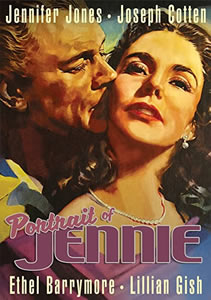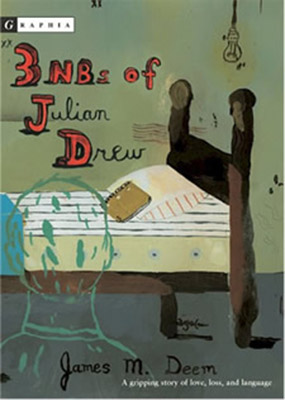Paperback edition, 2003. |
~~ ~~ Other Novels by James M Deem: The Very Real Ghost Book of Christina Rose ~~ |
Some Suggestions
Before reading NB#1: Explain to students that the book is partially written in Julian's code and that the first half of NB#1 (to page 38, hardcover edition) may be confusing. Encourage students to keep reading and not stop to determine meaning. You may wish to provide students with a list of characters encountered in NB#1: Julian Drew, 43, 543, Emma, Roger, Rebecca, Roxie, U, S, Mrs. Pope, J. Ask students to identify (as best they can) who these characters are and how each is related to Julian.
 Before reading NB#2: Clear up any confusion students have about the first NB. Explain that it is all right is they do not know what everything means or who everyone is at this point, though they may have hunches (NB#2 explains away most of the confusion). If possible, show the movie Portrait of Jennie to students. This haunting film may help students understand more clearly Julian's desire to recapture the part. I highly recommend it.
Before reading NB#2: Clear up any confusion students have about the first NB. Explain that it is all right is they do not know what everything means or who everyone is at this point, though they may have hunches (NB#2 explains away most of the confusion). If possible, show the movie Portrait of Jennie to students. This haunting film may help students understand more clearly Julian's desire to recapture the part. I highly recommend it.
Before reading NB#3: Discuss what students thought of the second notebook (i.e., how do they feel about Mrs. Pope and the death of her child? How do they feel about Julian now that they know who U is? How do they feel about Julian's relationship with S?) Ask students to predict what might happen in NB#3.
After finishing the book: Ask students what they believe happened in NB#3 (Was it an account of real events? Was it a "novel" that Julian wrote?). Then ask them what they believe will happen at the end of the book (especially if they believe that NB#3 was real).
Writing activities: The novel is filled with potential writing assignments. You could ask students to describe a place they know very well (pp. 38-40, HC), to describe something that they don't like to do (pp. 109-110, HC), or to write the (condensed) story of their lives (pp. 137-143, HC). Consider asking students to write by breaking the same rules that Julian does when he completes these assignments (lack of indentation, unusual line length, repetitions,and so on). Or ask students to write NB#4: what happened to Julian a year later, from his point of view (or perhaps from S's point of view). But perhaps the most important assignment that can spring from the novel is the introduction of a journal assignment (Julian's provides an excellent example); students who appreciate the novel will want to write when they finish reading it.
